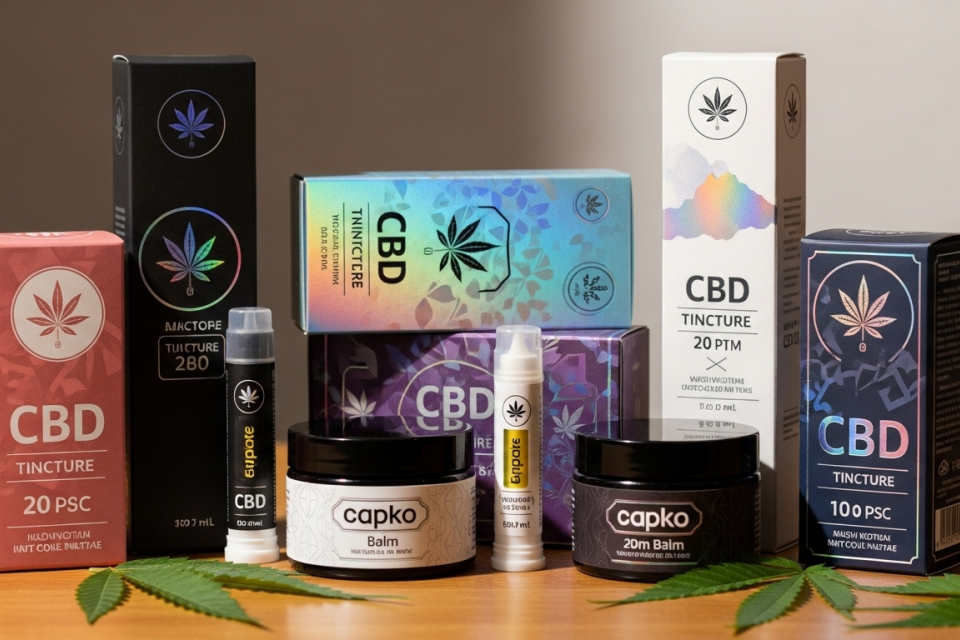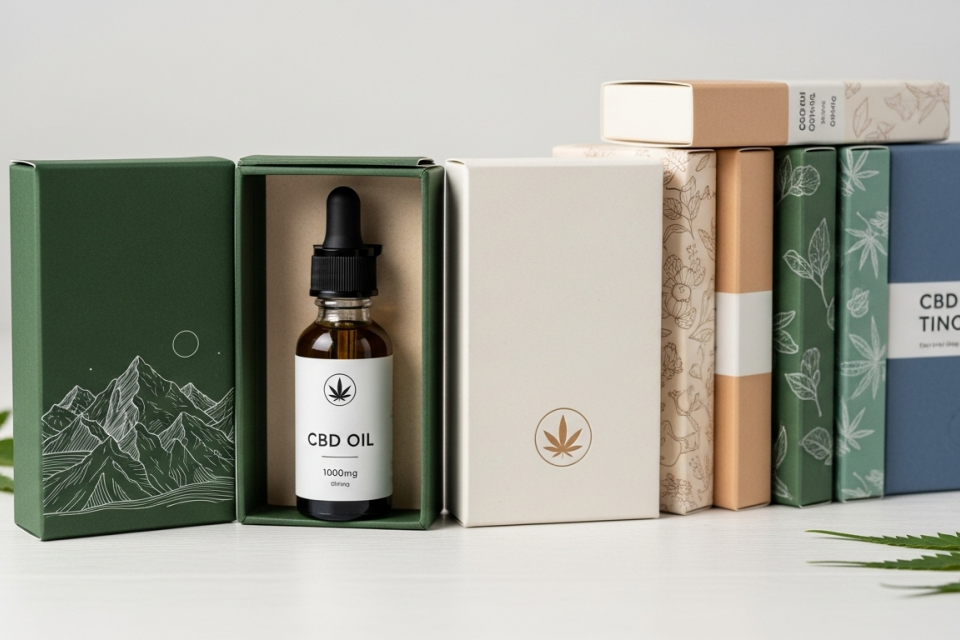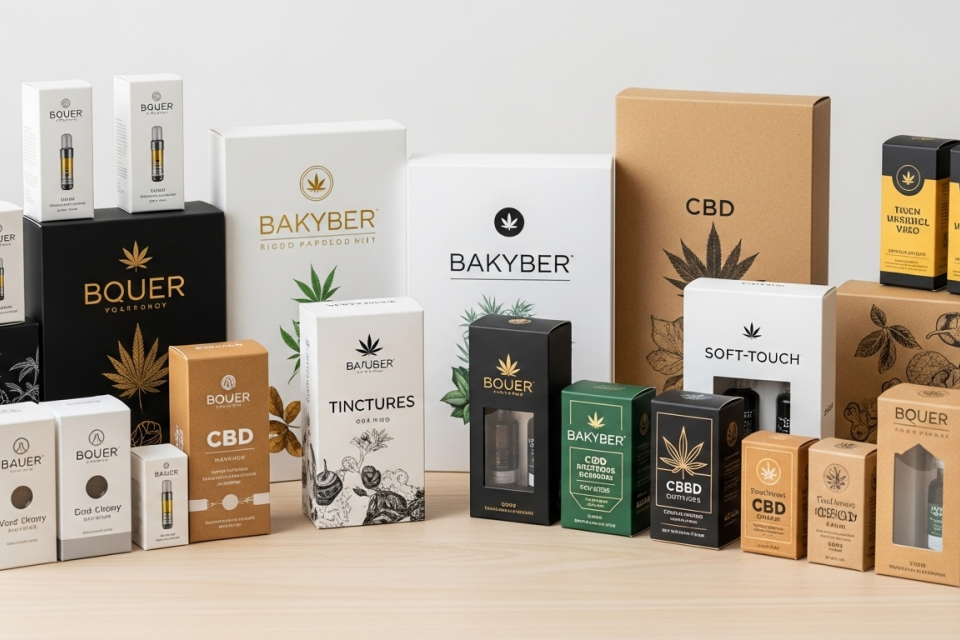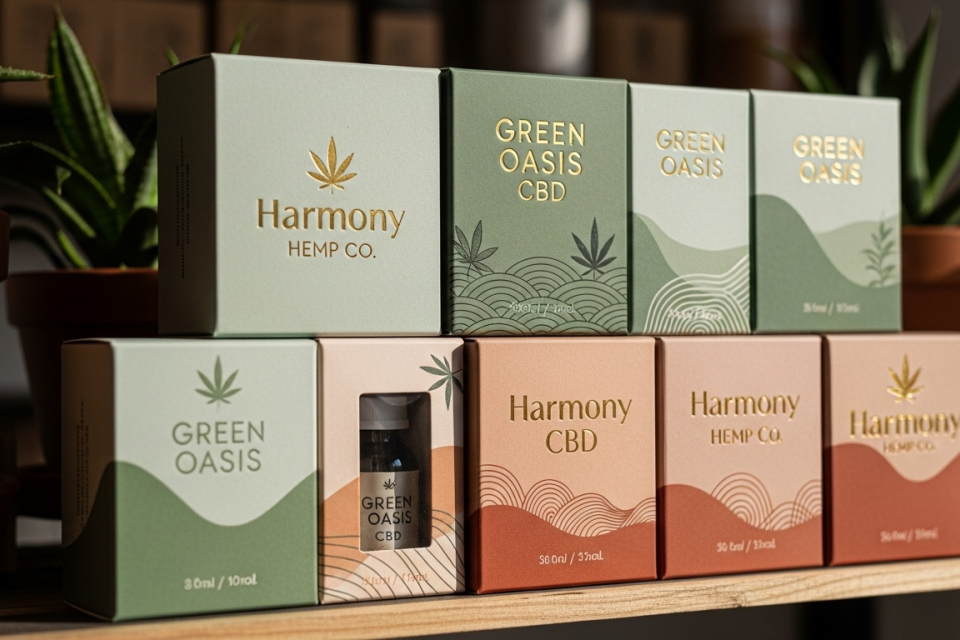Differentiating Your CBD Brand with Packaging
This guide explores how strategic packaging can differentiate your CBD brand. It covers design, regulatory compliance, and key industry trends for success.
Summary
Differentiating Your CBD Brand with Packaging is an essential concept in the rapidly growing cannabidiol (CBD) market, where effective packaging serves as a critical component of brand identity and consumer engagement. As the industry experiences exponential growth—projected to reach $47 billion by 2028—brands face the challenge of standing out amidst increasing competition and regulatory complexities. Packaging not only protects products but also communicates a brand’s values, aesthetics, and functionality, making it a pivotal aspect of consumer decision-making.
The importance of packaging is underscored by research indicating that 72% of American consumers report that packaging influences their purchasing decisions. Various types of packaging, including primary and secondary, are employed to meet functional and branding needs, from child-resistant containers to eco-friendly materials that cater to the growing demand for sustainability. Notably, brands that incorporate unique design elements—such as color psychology, typography, and storytelling—can enhance their visibility and emotional connection with consumers, setting themselves apart in a crowded marketplace.
However, brands must navigate a landscape fraught with regulatory challenges and consumer expectations for transparency and authenticity. Federal and state regulations dictate specific requirements for CBD product labeling and packaging, creating hurdles that can impact brand reputation and compliance. Furthermore, the balance between safety features, particularly for child-resistant packaging, and aesthetic appeal poses a significant challenge for many companies, particularly smaller brands with limited resources.
Amidst these challenges, the future of CBD packaging is leaning toward innovation, with trends focusing on sustainability, technological advancements, and user-friendly designs. Companies that effectively implement these strategies will not only comply with regulatory standards but also build lasting relationships with consumers who prioritize authenticity and eco-conscious practices. As the market continues to evolve, the differentiation of CBD brands through innovative packaging will be crucial for capturing consumer interest and loyalty.
Table of Contents
Types of Packaging
When it comes to packaging for CBD products, several types are available that cater to both functional and branding needs. The choice of packaging can significantly impact consumer perception and purchasing decisions, as 72% of Americans indicate that packaging influences their choices. The main types of packaging for CBD products include primary and secondary packaging.
Primary Packaging
Primary packaging refers to the materials that directly contain the CBD products. This type of packaging is crucial as it protects the product and ensures its quality.
- Glass Dropper Bottles: Often used for CBD oils, these bottles provide an airtight seal that maintains the integrity of the product and allows for easy dispensing.
- Plastic Bottles and Zipper Bags: These are typically utilized for CBD gummies and other edible products, offering convenience and a secure seal to keep the contents fresh.
Secondary Packaging
Secondary packaging serves more branding and display purposes. This type of packaging not only holds individual containers together but also acts as a first point of contact for consumers.
- Boxes: A box that contains a CBD oil bottle can carry branding elements such as the product name, logo, and unique designs, enhancing brand recognition.
- Flip-top Boxes: These can be used to pack multiple items, such as pre-rolled paper cones, providing protection during shipping while also presenting an appealing display for customers.
Both primary and secondary packaging should be designed with durability and visual appeal in mind, as they play a critical role in attracting consumers’ attention.
Packaging Materials
The materials used for CBD packaging can vary significantly and should be chosen based on product characteristics and regulatory requirements.
- Child-resistant Containers: Due to legal mandates, all packaging must meet specific safety standards, making child-resistant designs essential for products such as oils and edibles.
- Eco-Friendly Materials: Incorporating recyclable, biodegradable, and ethically sourced materials can resonate with consumers increasingly concerned about sustainability. Reports indicate that about 69% of consumers prefer brands that commit to eco-friendly practices.
By selecting appropriate types and materials for packaging, brands can not only ensure compliance with regulations but also enhance customer satisfaction and loyalty through appealing and functional designs.

Design Elements of CBD Packaging
Overview
The design of CBD packaging plays a critical role in both product protection and brand identity. Effective packaging not only safeguards the product but also enhances its appeal to consumers, thereby influencing purchasing decisions. Various design elements come into play, including color, typography, and imagery, each contributing to the overall impact of the packaging on the consumer’s perception.
Color Psychology
Color is one of the most influential elements in packaging design, as it evokes specific emotions and associations among consumers.
- Green: Often linked to nature, health, and wellness, making it a favored choice for CBD brands aiming to convey a sense of naturalness.
- Blue: Conveys trust, calmness, and reliability, ideal for brands that wish to instill confidence in their products.
- Black and Gold: Typically suggest luxury and high quality, attracting consumers looking for premium products.
Understanding color psychology is essential for brands to connect with their target audience effectively, as the right color choices can enhance visibility and reinforce brand messaging.
Typography
Typography is another significant design element that can reflect the personality of a CBD brand. The choice of font should align with the brand’s identity and intended message. For instance, a bold and modern font might communicate innovation and cutting-edge technology, while a traditional serif font can suggest reliability and trustworthiness. The appropriate typography not only enhances readability but also contributes to the overall aesthetic appeal of the packaging.
Imagery and Storytelling
Imagery used in CBD packaging serves as a visual representation of the brand and its products. It can be employed to narrate a story, providing context about the product’s origins, benefits, or production methods. This storytelling aspect adds depth to the packaging, helping consumers connect emotionally with the brand. Additionally, the use of visually appealing images can draw attention on crowded retail shelves, enhancing the likelihood of purchase.
Functional Design
Beyond aesthetics, functional design is crucial for ensuring a positive user experience. Practical considerations, such as ease of opening, resealability, and storage convenience, significantly impact customer satisfaction. Packaging that combines visual appeal with functionality not only meets consumer expectations but also reinforces brand loyalty.
Authenticity and Transparency
In an age of increased consumer awareness, authenticity and transparency are paramount. Packaging that clearly communicates the brand’s values, sustainability efforts, and ingredient transparency fosters trust among consumers. Brands that prioritize these elements in their packaging design are more likely to build lasting relationships with their customers.

Regulatory Considerations
Navigating the regulatory landscape for CBD packaging is essential for companies aiming to differentiate their brand while ensuring compliance with legal standards. The complexities arise from the need to adhere to both federal and state regulations, which can vary significantly. This section outlines the key considerations businesses must address when designing CBD packaging.
Compliance with Federal Regulations
All CBD products must comply with federal labeling requirements as set forth by the Food and Drug Administration (FDA). Labels must include a clear Statement of Identity that accurately reflects the product type, such as “CBD extract” or “CBD isolate,” rather than simply “cannabidiol”. Additionally, products must indicate the net quantity of contents in both U.S. and metric systems, with proper measurements clearly stated. The inclusion of a list of ingredients is also mandatory, as this informs consumers about what they are ingesting.
Mislabeling can lead to severe repercussions, including legal penalties and damage to a brand’s reputation. Recent FDA reports have highlighted the consequences of misleading packaging, especially for products containing Delta-8 THC, which have been marketed with deceptive visuals that appeal to children. Thus, businesses must ensure accuracy and honesty in their packaging claims to foster customer trust.
State-Specific Regulations
In addition to federal regulations, businesses must stay informed about state-level requirements that govern CBD packaging. For instance, California has introduced specific updates to its cannabis packaging laws, mandating that products carry Proposition 65 warning labels concerning chemicals that may cause cancer or reproductive harm. Furthermore, cannabis products in California are required to display essential information, including THC and CBD content, serving sizes, and health risks associated with consumption.
Failure to comply with these regulations can lead to significant penalties, underscoring the necessity for companies to engage with compliance teams or legal experts to navigate these challenges effectively.

Packaging Design and Brand Identity
While adhering to regulatory standards, companies still have the opportunity to create packaging that reflects their brand identity. Thoughtful design can include mandatory elements like health warnings and product information, while also standing out on retail shelves. Striking a balance between compliance and brand differentiation is crucial, as it can enhance consumer loyalty and market presence.
Case Studies
User-Centric Design Approaches
A notable example of effective packaging design in the CBD market can be seen with brands that adopt user-centric strategies. By focusing on the end user’s experience, these brands ensure that their packaging is not only visually appealing but also practical and convenient. For instance, minimalist designs featuring clean lines and simple graphics resonate well with a contemporary audience, promoting an image of sophistication and elegance. Custom illustrations can further enhance brand identity, setting products apart in a crowded marketplace.
Innovative Branding and Storytelling
Brands like Lord Jones exemplify the power of storytelling through packaging. Their unique branding approach creates a regal effect that appeals to consumers seeking sophistication. By utilizing tone-on-tone logos and understated designs, they successfully engage customers, leaving them curious about the brand and its products. This strategy aligns with the growing consumer demand for packaging that reflects a brand’s core values and identity.
Emphasis on Sustainability
As consumer awareness of environmental issues rises, brands are increasingly incorporating eco-friendly packaging solutions. This shift is evident in the market’s response to biodegradable and recyclable materials, with companies adopting sustainable practices to attract environmentally-conscious consumers. For example, custom CBD packaging that emphasizes sustainability not only helps brands stand out but also builds trust with consumers who prioritize eco-friendly practices in their purchasing decisions.
The Importance of Cultural Sensitivity
Cultural considerations in packaging design are vital for brands aiming for international markets. Color associations, for instance, can vary significantly across different cultures, and successful brands take these nuances into account when designing their packaging. By doing so, they can create a more inclusive and relatable product that resonates with diverse consumer bases.
Personalization Trends
Personalization has emerged as a significant trend in CBD packaging, allowing brands to cater to individual customer preferences. Unique shapes, sizes, and personalized labels create memorable unboxing experiences that enhance customer engagement. As consumers increasingly seek tailored products, brands that successfully implement these personalized touches can foster deeper connections with their audience and strengthen brand loyalty.
Through these case studies, it becomes evident that effective packaging design is not just about aesthetics; it is a multifaceted approach that encompasses user experience, storytelling, sustainability, cultural sensitivity, and personalization. These elements work together to differentiate CBD brands in a competitive marketplace, driving consumer interest and loyalty.

Challenges in Packaging
The packaging of CBD products faces several challenges that can significantly impact a brand’s market presence and consumer appeal. As the CBD market grows increasingly competitive, with sales rising from $0.5 billion to $1.8 billion over four years, the pressure to create standout packaging becomes more pronounced.
Regulatory Compliance
One of the primary challenges is adhering to stringent packaging regulations, which can vary widely by region. Regulations may stipulate specific requirements regarding packaging colors, sizes, and finishes. For instance, some jurisdictions require all-white packaging or impose limits on design elements, adding complexity to the packaging process. Companies must navigate these regulations while ensuring that their packaging remains attractive and true to their brand identity.
Balancing Safety and Aesthetics
Another significant challenge is incorporating child-resistant features without compromising the visual appeal of the packaging. Child-resistant packaging often necessitates the use of specific materials or designs that can restrict creativity. For example, thicker materials and certain closure types, while necessary for safety, can also drive up costs, making it difficult for smaller companies to achieve the desired modern look. Brands must find innovative solutions to meet safety standards while still capturing consumer attention.
Cost Management
Implementing safety features, particularly those aimed at preventing accidental ingestion by children, can be financially burdensome. Developing specialized packaging often requires custom molds and new machinery, which can escalate costs. For smaller brands, managing these expenses while remaining competitive in pricing is a crucial challenge. The necessity to balance safety, aesthetic appeal, and budget constraints can place significant pressure on companies striving to differentiate themselves in a crowded market.
Environmental Considerations
With a growing consumer preference for sustainable and eco-friendly packaging options, brands also face the challenge of sourcing materials that align with these values. Many consumers, approximately 69%, prefer businesses that utilize eco-friendly packaging. Thus, finding a way to produce sustainable packaging that meets safety requirements and remains cost-effective is critical for brand loyalty and market differentiation.
Future Trends in CBD Packaging
As the CBD industry continues to evolve, innovative packaging solutions are becoming increasingly important for brands looking to stand out in a crowded market. The future of CBD packaging will likely be characterized by advancements in technology, sustainability, and design that cater to consumer preferences and regulatory requirements.
Technological Advancements
The integration of smart packaging technologies is set to transform how CBD products are marketed and perceived. Features such as NFC tags will allow consumers to access detailed product information simply by tapping their smartphones against the packaging, enhancing the customer experience and providing transparency about product origins and ingredients. Augmented reality (AR) applications will offer interactive experiences, enabling consumers to engage with the brand in novel ways, while track-and-trace technologies will ensure product authenticity and safety.
Sustainability Focus
With growing consumer awareness about environmental issues, sustainable packaging is becoming a critical focus for CBD brands. Many companies are committing to the use of eco-friendly materials, such as recycled paper and biodegradable plastics, to reduce their environmental impact. A report highlighted that while 75% of businesses aim to utilize sustainable packaging, fewer than 30% successfully implement it, indicating a significant opportunity for brands that prioritize sustainability to differentiate themselves.
Functional and User-Friendly Designs
Future packaging designs will emphasize functionality alongside aesthetics. Innovative formats like child-resistant closures, reusable containers, and compact designs for portability will cater to consumer demands for safety, convenience, and sustainability. Custom packaging solutions that enhance the user experience—such as resealable options that prolong product freshness—will likely become standard as brands seek to build trust and foster customer loyalty.
Customization and Branding
In a competitive landscape, customized packaging will play a vital role in branding strategies. By incorporating unique visual elements and creative designs, brands can create memorable first impressions and establish a strong brand identity. Incorporating social media handles, QR codes, or even promotional offers directly on packaging can further engage consumers and encourage repeat purchases.
